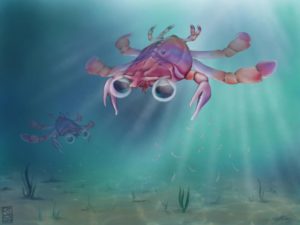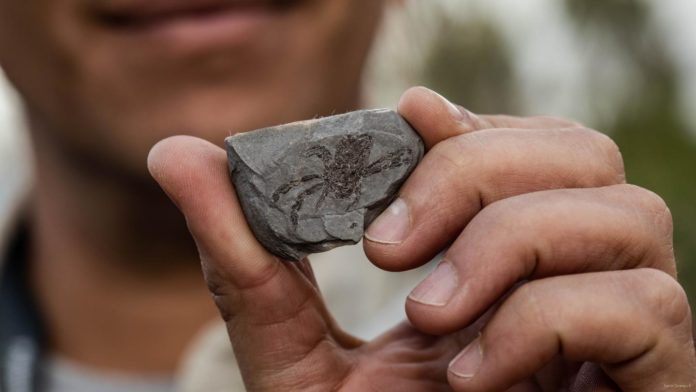Paleontologists from the University of Alberta have discovered a chimera-like crab fossil with features similar to several different marine arthropod species.
“We started looking at these fossils and we found they had what looked like the eyes of a larva, the mouth of a shrimp, claws of a frog crab, and the carapace of a lobster,“ says Javier Luque from UofA in a press release. “These new fossils break all those rules.”
The pocket-size creature has been fittingly titled Callichimaera perplexa – ‘perplexing beautiful chimera’. Their results were published in Science Advances.
Frankenstein arthropod may be the “platypus of the crab world”
Although it shares features with many different families, the team declared it to be a unique branch of marine arthropods. Luque added that the strange and exceptional nature of C. perplexa makes it the “platypus of the crab world.”
Approximately 70 fossils were sourced from Colombia, Wyoming, and Morocco – the wide range of territory being indicative of an adaptable creature. They were estimated to have existed between 90-95 million years ago during the Cretaceous Period.

Thanks to the fossils’ exceptionally well-preserved nature, they offered significant insight into the life and times of this cartoonish creature. The team identified a spindle-shaped body and exposed tail, along with paddle legs and large unprotected compound eyes fit for a life spent swimming as opposed to crawling like a regular crab. These features are typical of Pelagic crab larvae.
The array of fossils also showcased a spectrum of maturity from babies to adults, the latter being proven by the “smoking gun” evidence of reproductive organs. Having such a number of well-preserved fossils along with a spectrum of maturity helps to establish prospective specimens as unique, since it showcases a logical progression of development over a lifetime.
“Evolutionary origins of novel forms are often obscure because early and transitional fossils tend to be rare, poorly preserved, or lack proper phylogenetic contexts,” say the authors.
As part of their extensive phylogenetic analysis, the authors assessed C. perplexa in relation to all major living and fossilized crab groups. They describe the mid-Cretaceous period that the new specimen lived in as one of “…extensive morphological experimentation”, adding that the loss of a typical ‘crab-like’ body has been recorded many times independently of this find.
The specimen’s retention of larval traits into adulthood may have been a result of heterochrony, says Luque. This is where juvenile characteristics are retained and amplified in adult specimens through modifications in the timing and rate of development.
“It hints at how novel forms evolve and become so disparate through time,” says Luque. “Usually we think of crabs as big animals with broad carapaces, strong claws, small eyes in long eyestalks, and a small tail tucked under the body. Well, Callichimaera defies all of these ‘crabby’ features and forces a re-think of our definition of what makes a crab a crab.”
Fully grown, the creatures were comparable to a quarter coin in size, but their wrench-like front claws likely packed a punch when hunting, which was probably a nocturnal activity given their bulbous eyes.
Their prey is suspected to have been tiny crustaceans like comma shrimp.
“We don’t think they were filter feeders,” Luque says. “We think they were actually active predators.”
Discovery may rewrite evolutionary history; more surprises await
Luque originally found evidence of C. perplexa back in 2005 when he was an undergrad mapping the geology of Pesca, Colombia. The long road of untangling its whereabouts on the evolutionary tree and confirming that it was indeed a part of the crab lineage was exhausting for Luque: “I call it my beautiful nightmare because it was so beautiful and frustrating to figure out,” he says.
Heather Bracken-Grissom, an evolutionary biologist from Florida International University, commented to the Washington Post on the significance of this “bizarre” find.
“This new transitional fossil is making us rethink how crabs have evolved over time because it’s introducing this unique body form we weren’t aware of before,” says Bracken-Grissom.
“It’s common to find novel body forms in older rocks, for instance from the Paleozoic when life was exploding into many new forms,” says Luque. “This discovery, from the mid-Cretaceous, illustrates that there are still surprising discoveries of more recent, weird organisms waiting to be found, especially in the tropics. It makes you wonder ‘what else is out there for us to discover?’”








































